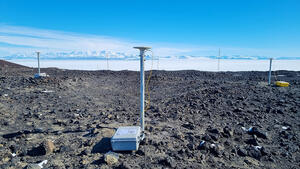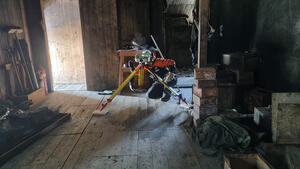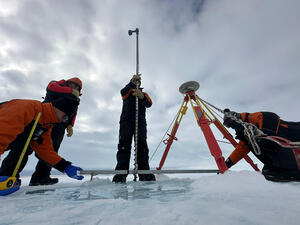A piece of frozen, rocky ground at Antarctica’s Arrival Heights now hosts important infrastructure that will help deliver more accurate, more reliable GPS to New Zealand and Australia.
A team from Toitū Te Whenua Land Information New Zealand (LINZ), supported by Antarctica New Zealand, recently visited Antarctica as part of our ongoing work on the continent.
This year’s work programme included overseeing the installation of antennae pillars for the SouthPAN network’s southernmost ground reference station.
SouthPAN is a joint project between New Zealand and Australia to improve the accuracy and reliability of positioning data from global navigation satellite systems (GNSS) such as GPS. Benefits include safer air travel and rescue services, precision agriculture and environmental monitoring.
The Antarctica ground reference station will provide critical information about the GNSS satellites before they rise above the horizon in New Zealand and Australia.

Using GNSS to check the correct positioning of the SouthPAN antennae pillars.
LINZ and our predecessors have been involved in Antarctica since the 1950s with Dave Collett, Abbey Douglas and Gareth Hodkinson the latest staff members to undertake this important mahi.
As part of a collaboration with the Antarctic Heritage Trust, we carry out monitoring surveys of heritage sites with the focus this year on Captain Scott’s Discovery and Terra Nova Huts.
Surveying these landmarks helps ensure they remain intact, preserving the memory of early polar explorers and allowing future generations genuine insight into their expeditions.

Doing precise levelling in cramped conditions inside the Discovery Hut built for Robert Falcon Scott’s 1901-04 expedition.
The team also checked, repaired and recalibrated our two Antarctic tide gauges at Scott Base and Cape Roberts.
The Scott Base tide gauge is the world’s southernmost tide gauge and provides the longest-running dataset in Antarctica. It has been capturing information on sea levels since 1957, providing vital data to help scientists better understand the impact of climate change.

Out on the ice to calibrate the tide gauge at Cape Roberts.
Media contact
Email: media@linz.govt.nz